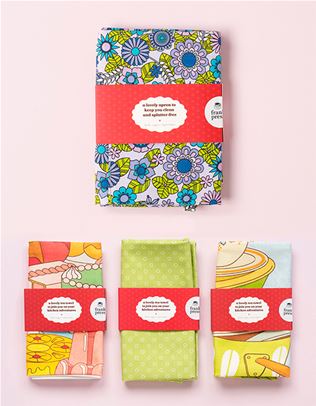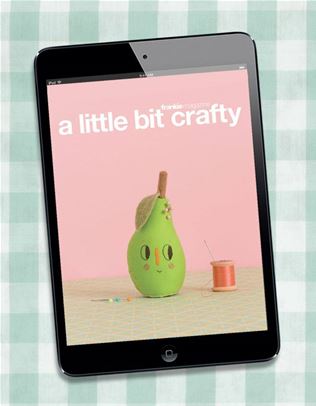the pros and cons of declaring bankruptcy
Ex-financial counsellor Rosemary Steinfort helps us weigh up the benefits and drawbacks of going bankrupt.
Bankruptcy is a mysterious beast. It’s either funny – like that Michael Scott scene from The Office – or the stakes are low – like running out of cash in Monopoly. But actual, legal, voluntary bankruptcy? You’d be forgiven if your knowledge extended as far as pop culture can take it. To help us demystify the murky myths of declaring bankruptcy, we caught up with recently-retired financial counsellor Rosemary Steinfort.
WHAT LEADS TO BANKRUPTCY? In simple terms, bankruptcy is a process that you can take if you can’t repay the money you owe, allowing most debts that you are unable to pay to be wiped. There’s an undeniable stigma around bankruptcy, but Rosemary believes that shouldn’t be the case. “Bankruptcy is not something to be ashamed of,” she says. “It is a legal process that allows people to find relief from financial situations they cannot manage, enabling them a fresh start.” There are a range of different reasons why someone – especially small-biz owners – might find that declaring bankruptcy is the optimal path forward. It’s not a decision to be taken lightly, Rosemary says, as going bankrupt “does have consequences that can impact your life.” But, she continues, “if you find your financial situation is causing you stress and affecting your ability to function normally, then it may be a good idea to wipe the slate clean and start again.”
THE PROS OF DECLARING BANKRUPTCY Despite its reputation, bankruptcy comes with a slew of benefits for those who have no other options. An advantage of declaring bankruptcy is that “most debts are wiped (such as credit card debts, unsecured personal loans, utility bills and rent) and you are able to keep some of your property, including necessary household items, a car which is under a certain value, tools of trade under a certain value, and other personal items if they are not considered to be of significant value.” The advantages of bankruptcy don’t just include financial relief, either. There are a range of mental and personal health benefits, like not being hassled by creditors. Instead, the trustee of your bankruptcy will manage your payments, and the ongoing payment relief will enable you to better manage your finances. Rosemary points out that this can all lead to “improved mental and physical health, as well as better relationships with family and friends.”
THE CONS OF DELCARING BANKRUPTCY It goes without saying that bankruptcy does come with its drawbacks. “You are allowed to apply for credit up to a certain amount during the three years of bankruptcy, but it may be difficult to be approved – you may also find it difficult to access credit after your bankruptcy ends,” Rosemary says. “Your personal assets may also be sold, including your house, cars that are more than a set value, and other items that are considered valuable.” Being bankrupt is a restrictive state to live in – your financials and personal commerce affairs are no longer entirely yours. While you are allowed to earn a certain amount of income, anything above that will be paid to the trustee to repay your debts. “Your name and personal details will be recorded on the National Personal Insolvency index, which allows the public to search for those that are bankrupt,” Rosemary explains. “This may impact your ability to do business, rent a house or apply for credit. Also, if you are a sole trader, you must include in your business name your own name as per the NPII, or inform anyone you conduct business with that you are bankrupt.”
CONSIDER OTHER OPTIONS Bankruptcy shouldn’t be the first option you jump to if you find yourself in financial strife. There are alternative paths to take that can help you manage and repay your debts. As an ex-financial counsellor, Rosemary has seen all kinds of people consider bankruptcy, and she has all kinds of alternative routes to try first. “If you do not want to declare bankruptcy, you can ask creditors for payment plans to repay the debt over a period of time,” she suggests. “Ask for a moratorium so the debt is put on hold – although, the debt will still accrue interest during the time it is on hold and you may have to pay more to catch up on the missed payments. Provide the creditors with evidence of why you are in financial hardship, such as medical letters if you are unwell – including mental health issues – and hope they can show some empathy.” If all of this sounds a tad daunting, Rosemary recommends a super-easy option that you should consider before anything else: talk to a financial counsellor. They’re free, confidential and independent, and might just be able to help you avoid a stickier financial situation.
WHAT HAPPENS NEXT? While bankruptcy lasts for three years and one day, your fresh financial start doesn’t stop along with your bankruptcy period. If anything, once your bankruptcy period ends, you should be in a better position to improve your financial situation and make the most of a clean slate. This can include keeping a budget so that you can track your expenses and income, as well understanding the importance of saving money that can be used for emergencies (thus stopping you from relying on credit). Rosemary also suggests that this is a good time to start rebuilding your credit rating.
Ultimately, bankruptcy is a fresh start, but it’s not one to rush into. Take the time to consider your options, and always speak to a financial professional before you make any big decisions. For more resources and help, take a peek at some of the following tools.
Australian Financial Securities Authority resources
Beyond Blue free mental health assistance
National Debt Helpline financial counselling
Small Business Debt Helpline
*Quick financial disclaimer. The information above doesn’t constitute financial advice, and it doesn’t account for your specific circumstances or financial goals. Make sure you get some independent guidance from a professional you trust.
For more small-business stories like this, visit frankie.com.au/strictly-business, or sign up to our monthly e-newsletter. Have a small-business story you’d like to share? Pitch it to us.

.jpg&q=80&h=682&w=863&c=1&s=1)


.jpg&q=80&h=682&w=863&c=1&s=1)







.jpg&q=80&w=316&c=1&s=1)













.jpg&q=80&w=316&c=1&s=1)










